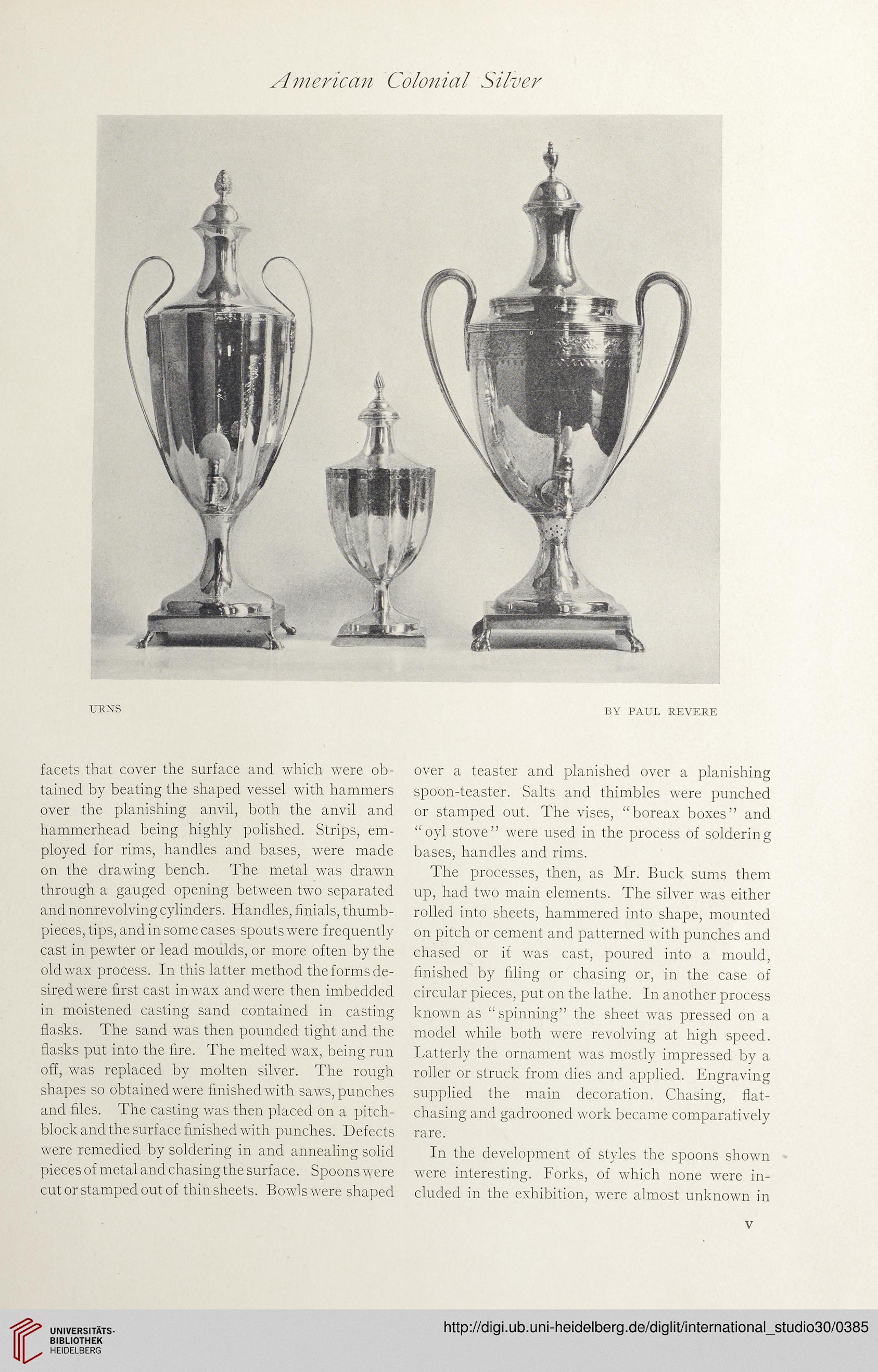American Colonial Silver
URNS
BY PAUL REVERE
facets that cover the surface and which were ob-
tained by beating the shaped vessel with hammers
over the planishing anvil, both the anvil and
hammerhead being highly polished. Strips, em-
ployed for rims, handles and bases, were made
on the drawing bench. The metal was drawn
through a gauged opening between two separated
and nonrevolving cylinders. Handles, finials, thumb-
pieces, tips, and in some cases spouts were frequently
cast in pewter or lead moulds, or more often by the
old wax process. In this latter method the forms de-
sired were first cast in wax and were then imbedded
in moistened casting sand contained in casting
flasks. The sand was then pounded tight and the
flasks put into the fire. The melted wax, being run
off, was replaced by molten silver. The rough
shapes so obtained were finished with saws, punches
and files. The casting was then placed on a pitch-
block and the surface finished with punches. Defects
were remedied by soldering in and annealing solid
pieces of metal and chasing the surface. Spoons were
cut or stamped out of thin sheets. Bowls were shaped
over a teaster and planished over a planishing
spoon-teaster. Salts and thimbles were punched
or stamped out. The vises, “boreax boxes” and
“oyl stove” were used in the process of soldering
bases, handles and rims.
The processes, then, as Mr. Buck sums them
up, had two main elements. The silver was either
rolled into sheets, hammered into shape, mounted
on pitch or cement and patterned with punches and
chased or it was cast, poured into a mould,
finished by filing or chasing or, in the case of
circular pieces, put on the lathe. In another process
known as “spinning” the sheet was pressed on a
model while both were revolving at high speed.
Latterly the ornament was mostly impressed by a
roller or struck from dies and applied. Engraving
supplied the main decoration. Chasing, flat-
chasing and gadrooned work became comparatively
rare.
In the development of styles the spoons shown
were interesting. Forks, of which none were in-
cluded in the exhibition, were almost unknown in
v




